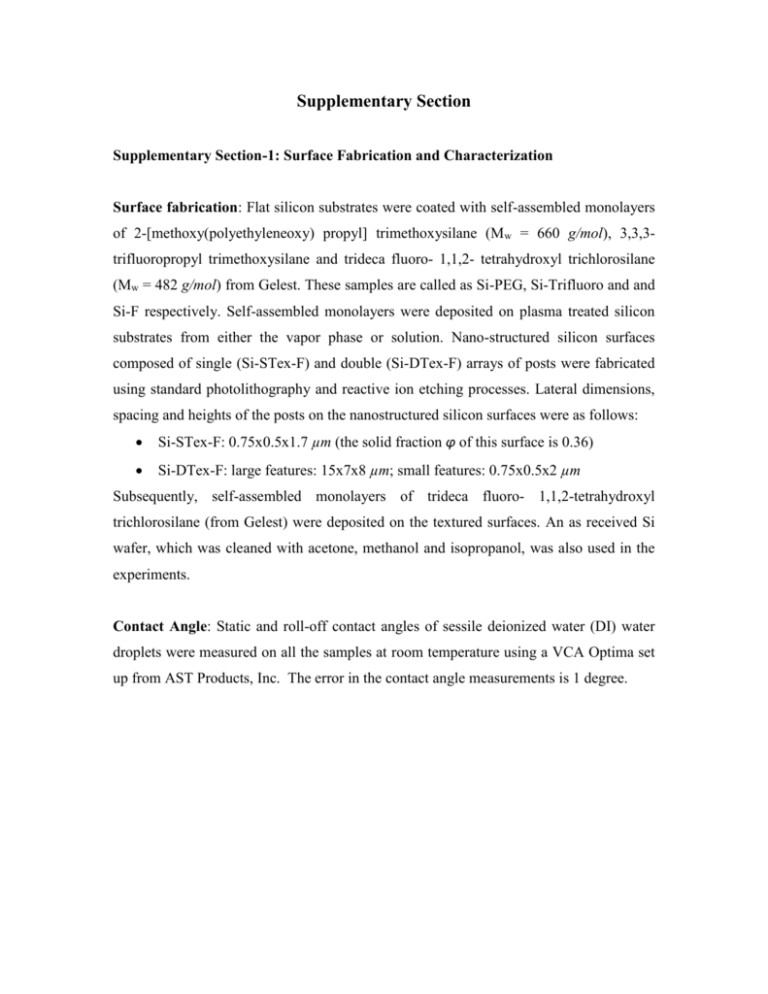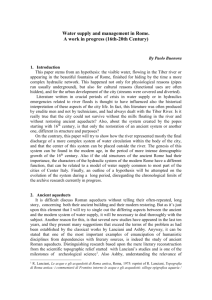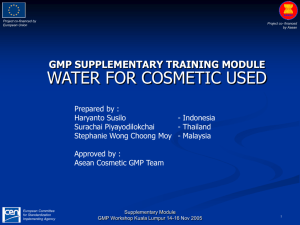1st rev APL supplementary_Water droplet impact
advertisement

Supplementary Section Supplementary Section-1: Surface Fabrication and Characterization Surface fabrication: Flat silicon substrates were coated with self-assembled monolayers of 2-[methoxy(polyethyleneoxy) propyl] trimethoxysilane (Mw = 660 g/mol), 3,3,3trifluoropropyl trimethoxysilane and trideca fluoro- 1,1,2- tetrahydroxyl trichlorosilane (Mw = 482 g/mol) from Gelest. These samples are called as Si-PEG, Si-Trifluoro and and Si-F respectively. Self-assembled monolayers were deposited on plasma treated silicon substrates from either the vapor phase or solution. Nano-structured silicon surfaces composed of single (Si-STex-F) and double (Si-DTex-F) arrays of posts were fabricated using standard photolithography and reactive ion etching processes. Lateral dimensions, spacing and heights of the posts on the nanostructured silicon surfaces were as follows: Si-STex-F: 0.75x0.5x1.7 µm (the solid fraction φ of this surface is 0.36) Si-DTex-F: large features: 15x7x8 µm; small features: 0.75x0.5x2 µm Subsequently, self-assembled monolayers of trideca fluoro- 1,1,2-tetrahydroxyl trichlorosilane (from Gelest) were deposited on the textured surfaces. An as received Si wafer, which was cleaned with acetone, methanol and isopropanol, was also used in the experiments. Contact Angle: Static and roll-off contact angles of sessile deionized water (DI) water droplets were measured on all the samples at room temperature using a VCA Optima set up from AST Products, Inc. The error in the contact angle measurements is 1 degree. Supplementary Section-2: Maximum and Steady-State Spread Diameter as Function of Contact Angle Spread diameter (mm) 10 Maximum spread Final spread 8 6 4 2 0 0 20 40 60 80 100 120 140 160 Contact angle (deg) FIG S1. Variation of maximum and final state spread diameters as a function of static contact angle. All experiments were performed at room temperature. Lines are only intended to serve as a guide. Although, both parameters are a function of surface wetting properties, the final state diameter shows a much stronger dependence on surface wetting properties. Supplementary Section-3: Temperature Dependence of Wetting Dynamics during Droplet Impact Additional experiments were carried out to ensure that phase transition did not influence droplet impact dynamics. A series of control experiments were performed, where salt water droplets (75% DI water + 25% CaCl2 (calcium chloride)) were impinged on these surfaces instead of pure DI water. Addition of salt reduces the freezing point of water to – 30 °C, eliminating the probability of freezing during impact. As shown in Figure S2 of the supplementary section, pure and salt water droplets show remarkably similar wetting dynamics for all substrates, discarding the icing phase transition as plausible explanation of the experimental results. In addition, we have conducted (infrared) IR thermometry experiments to determine the freezing kinetics of single water droplets on these substrates. Our results suggest that the earliest onset of freezing, which happens on the hydrophilic PEG sample, occurs 1-2 seconds subsequent to droplet impact. The remarkable slowing down of PEG wetting dynamics as shown in Figure S2b) occurs at much earlier stage (10 ms after impact). Si-PEG, DI water Spread diameter/ mm -15°C 22°C 85°C Si-PEG, DI water 8 6 4 2 0 0 10 Spread diameter / mm 10 (a) 8 Si-Double Texture5 10 F- DI water 15 -15°C 22°C 85°C 6 4 2 0 0 10 Time (ms) (c) Si-Double Textured-F, DI water (b) 8 Si-PEG, DI water+ 20% CaCl 2 20 Spread diameter / mm Spread diameter/ mm 10 -15°C 22°C 85°C 6 4 2 5 10 15 Time (ms) (d) -15°C 22°C 85°C Si- Double Textured-F, DI water+ 20% CaCl 2 8 20 6 4 2 0 0 0 5 10 Time (ms) 15 20 0 5 10 Time (ms) 15 20 FIG S2. Variation of spread diameter as a function of time and temperature. Si-PEG:( a) DI Water,( b) DI water + 25% CaCl2. Si-Double Textured-F: (c) DI Water, (d) DI water + 25% CaCl2. Water droplet diameter and velocity were equal to 2 mm and 2.3 m/s, respectively. These figures reveal the profound impact of surface temperature on water droplet impact dynamics on hydrophilic surfaces (in the absence of freezing). It should also be noted that the effect of temperature on impact dynamics on superhydrophobic surfaces is negligible due to a limited heat transfer path.

